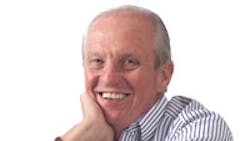Having products in nearly nine of 10 homes indicates that Georgia-Pacific Corp. knows a thing or two about advertising. A.D. "Pete" Correll, Georgia-Pacific's CEO, explains his firm's advertising decisions and what it means to be associated with racing and Mickey Mouse.
IW: In terms of advertising, Georgia-Pacific has moved toward alternative media. Can you explain the processes and decisions behind sponsoring a car in NASCAR and the alliance with Walt Disney Parks and Resorts?
Correll: NASCAR is a unique opportunity. Its fan base is exactly the demographics of our consumer -- middle America. It's the same family that shops at Wal-Mart, Home Depot, Lowes, Sam's Club, Costco, which is where our goods are sold. The fans are incredibly loyal to sponsors of the sport. And then we had this unique opportunity to associate ourselves with the Petty family. Richard Petty and the Petty name are one of the most recognized and respected names in the United States. It almost was a no-brainer. Now what we need, of course, is better on-track performance. As the car performs better, we get a much better return on our investment. Factually it has been a very good investment for our company.
Why Disney? You've got the same thing. You've got one of the phenomenal worldwide brands. We're a company where our brands are in 85% of the consumers' homes, but we don't have a killer brand. We don't have a Charmin or a Bounty. So the association with a firm like Disney or NASCAR, the opportunity to sponsor an attraction as well as be in all the theme parks with our goods with high visibility is a more effective way to spend our advertising and promotion dollars. It's just more effective than mass TV advertising.
IW: What are your thoughts on traditional mass marketing?
IW: You quoted Bill Johnson, CEO of H.J. Heinz and member of the Georgia-Pacific board, as saying, "50% of your advertising is effective. The problem is, you just don't know which 50% it is." Where do you think NASCAR and Disney are right now?
Correll: Well I think it is the 50% that is effective, but am I absolutely sure? The answer is of course not. Advertising is very hard to know what is effective. You can get panels to view the ads. You can get focus groups. You can get responses, but the real question is do people go pick your product off the shelf because of the ads. And I have a higher confidence that the answer to that question is yes in non-traditional mediums.
